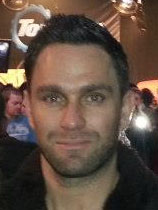VR and AR development companies
What is AR and VR, how did they appear, how are they different and what unites them
We are launching a series of materials on augmented and virtual reality. We will tell you the key about these technologies in the three most common areas: games, medicine and advertising. Let's start with entertainment and how it all began.
Contents

What is AR and VR
What is AR and VR, how did they appear, how are they different and what unites them? What is the scope of VR development companies? AR (Augmented reality) - augmented reality technologies. They combine the display of reality and elements of computer graphics. Reality can be either augmented or disguised. All images are three-dimensional, the user can actively influence the process in real time. This happens on a smartphone screen, or in special glasses and helmets. You point your smartphone at your desk and you see a fantastic animal sitting on it.
VR (Virtual reality) - virtual reality technologies. The result is a fully simulated experience that may or may not resemble the real world. A person puts on a helmet or glasses, headphones and is completely immersed in a new reality. Jungle, space, whatever - within the imagination of the developers. A person can virtually move, interact with virtual functions and objects. This can be done using controllers or special gloves. For a more complete immersion, VR suits are used. There are also whole VR rooms that can be found in some entertainment centers and universities (for example, at Moscow State University).
Historically, VR and AR have been one direction. The term "augmented reality" appeared in 1990, and the concept of a virtual environment has been around since 1959. "Virtual reality" was first named by science fiction writers and then promoted by entrepreneurs in the 1980s.
What event is considered the first in the history of VR development firms? They argue about this. We consider this to be the development of the Sensorama device. American director Morton Heilig introduced his concept of "Theater of Experience" in the 1950s. The idea was to create a theatrical space that would embrace all human senses and give him the opportunity to influence the process. In 1962, Heilig presented the Sensorama, a device with a stereo display, scent diffusers, fans, a stereo sound system and a movable chair. The 3D motion picture for Sensorama simulated a motorcycle ride through the streets of Brooklyn. The viewer could smell the wind, the vibration of the motorcycle seat, the aroma of pizzerias and eateries, the smell of gasoline. However, Heilig was unable to find investment for the further development of the project. The device was expensive, bulky, and could only be used by one person at a time. And the advantages over conventional cinema are not obvious. In addition to Sensorama, Heilig patented the Telesphere Mask. It was a personalized movie viewing device with a sense of reality: smells, air breezes, stereo sound and 360-degree views.
NASA and the CIA
NASA and the CIA learned about virtuality and became interested in it after the presentation of another device, several years later. Harvard professor Ivan Sutherland, together with his student, developed the "Sword of Damocles" system. The virtual environment was a three-dimensional model of a room. The display glasses were heavy and fixed to the ceiling for easy donning.
Where there is a military and space budget, there are good investments. In the 1970s, the virtual reality industry began to take shape. It has supplied devices for flight simulation, military training, medicine, and the automotive industry.
Commissioned by the US Department of Defense, artist David Em has developed an application for quick virtual acquaintance with new territories. The first experimental map was created for the American city of Aspen. You could choose the time of the year, go into any building, examine the details, include interviews with people. See not only realistic, but also abstract visualization of the city. At the top of the frame is the navigation map. As we now know, all these features have migrated over time to the gaming industry.
In the 1980s, VPL Research developed equipment that was already close to modern ones - the EyePhone glasses and the DataGlove glove. VPL creator Jaron Lanier made the name "virtual reality" popular. And technologies from the sphere of scientific and military developments came to business, entertainment, to people.
AR spun off into a separate direction in 1990. For the first time this name was used by a Boeing researcher. And the first specialized VR development companies appeared in the USAF laboratory in 1992. It was a Virtual Fixture device with exoskeleton, glasses and headphones, designed by Louis Rosenberg. With the help of this, a person could control equipment from a distance, seeing landmarks and tips for completing tasks: guide lines, barriers, fields.

